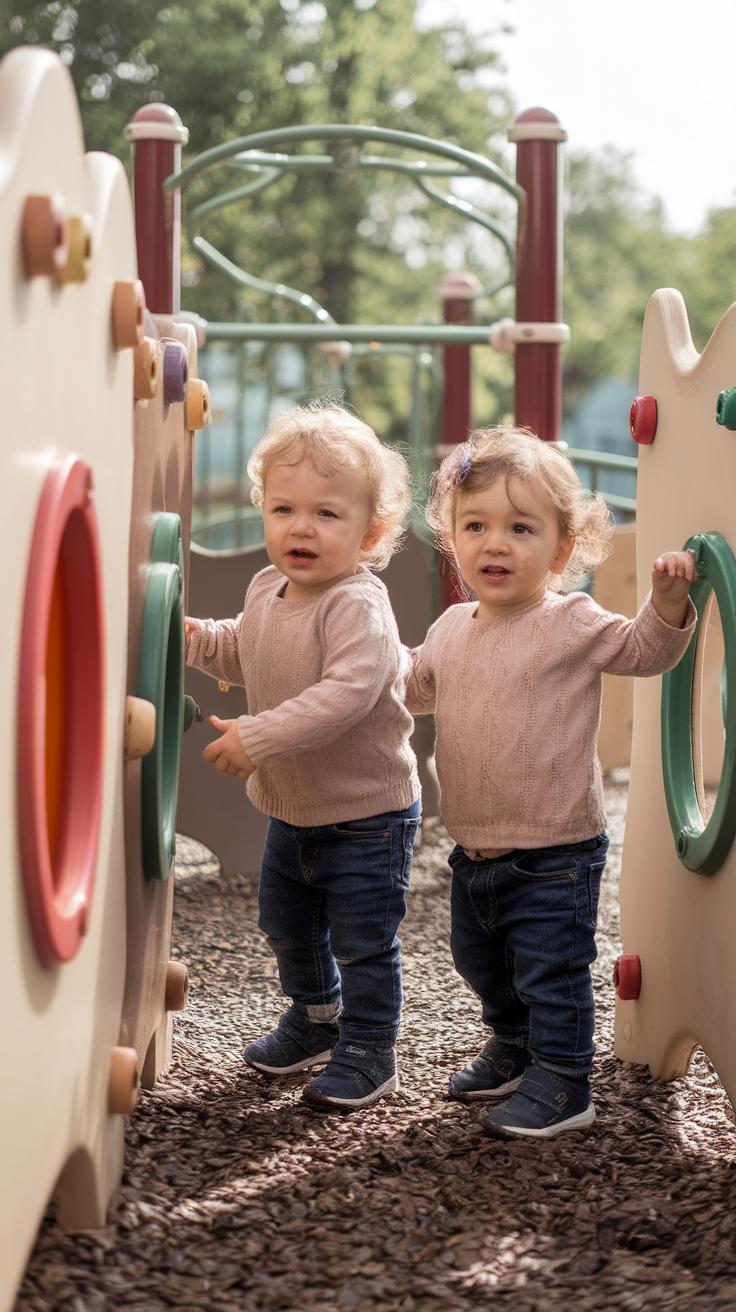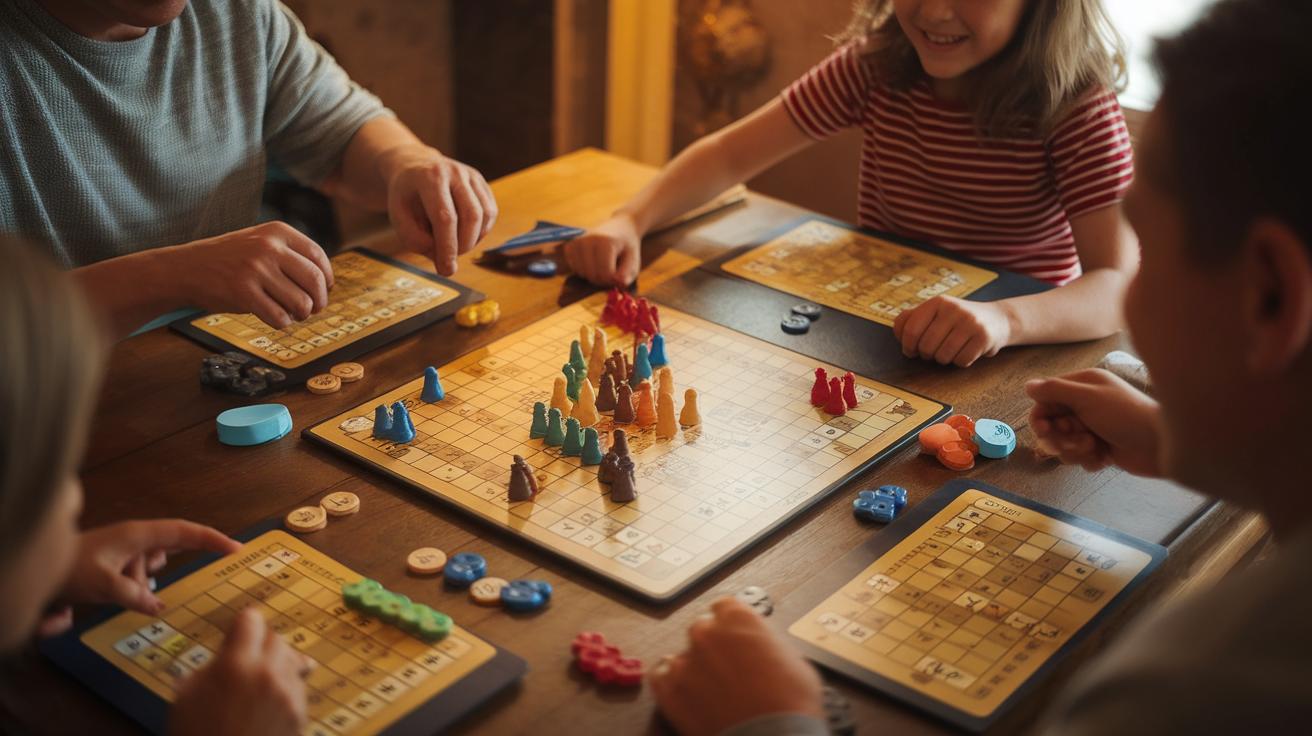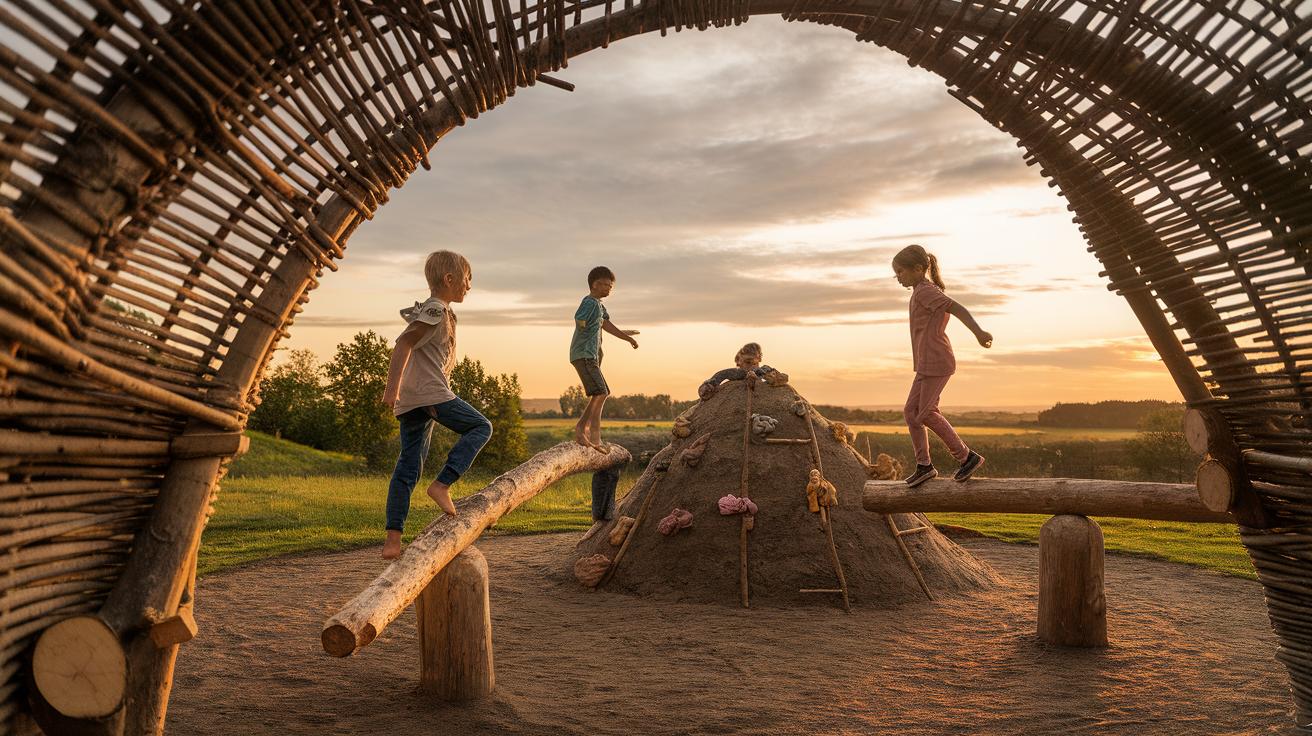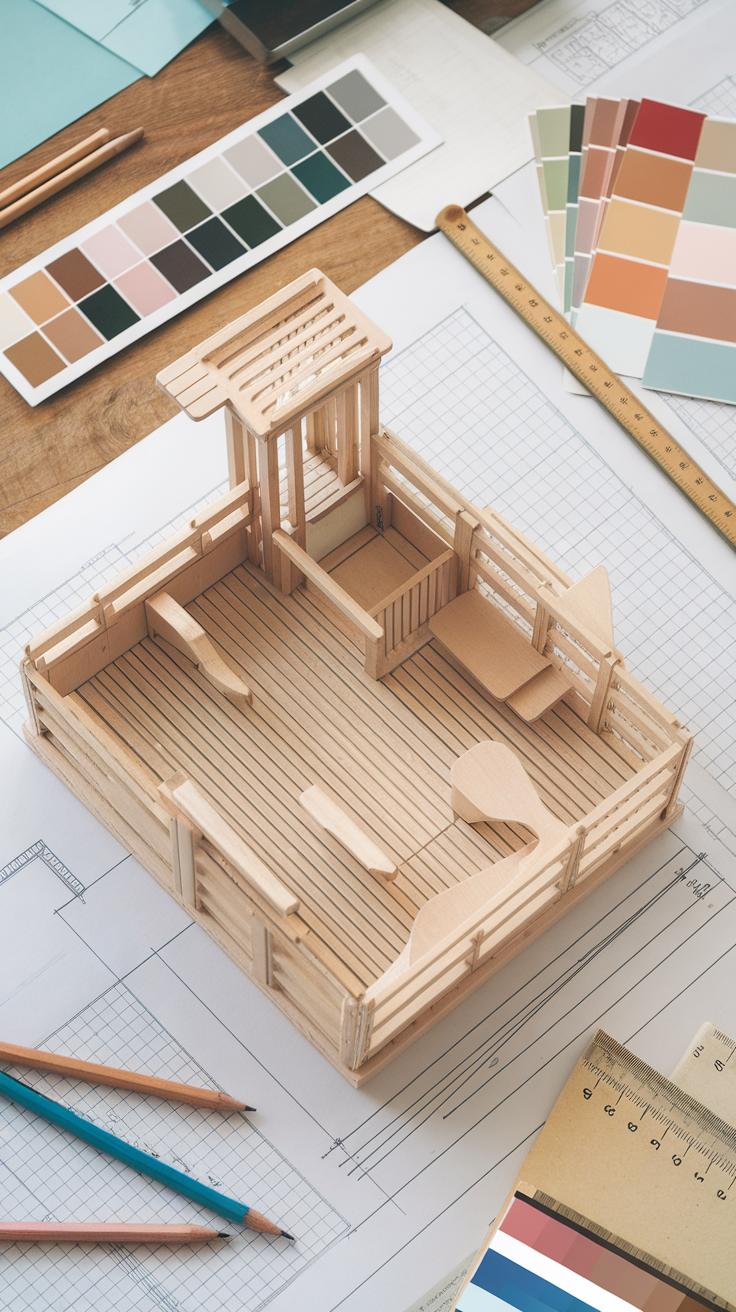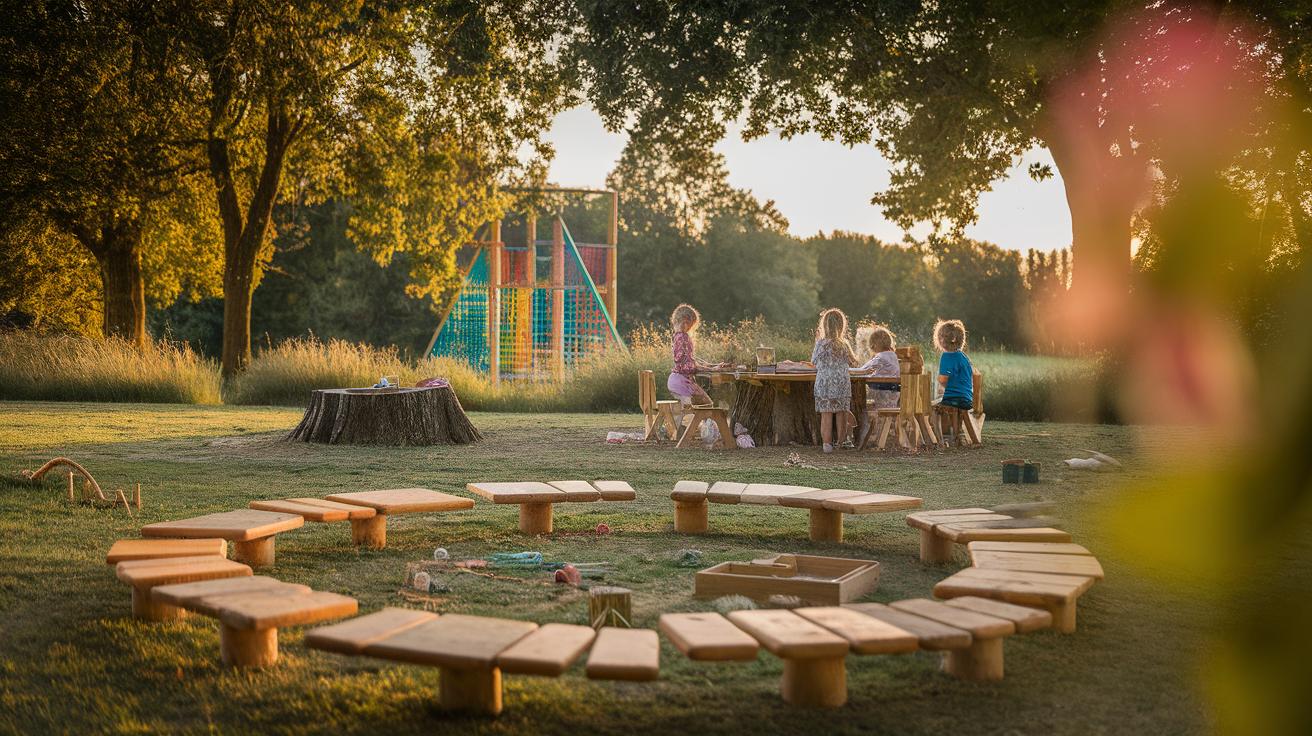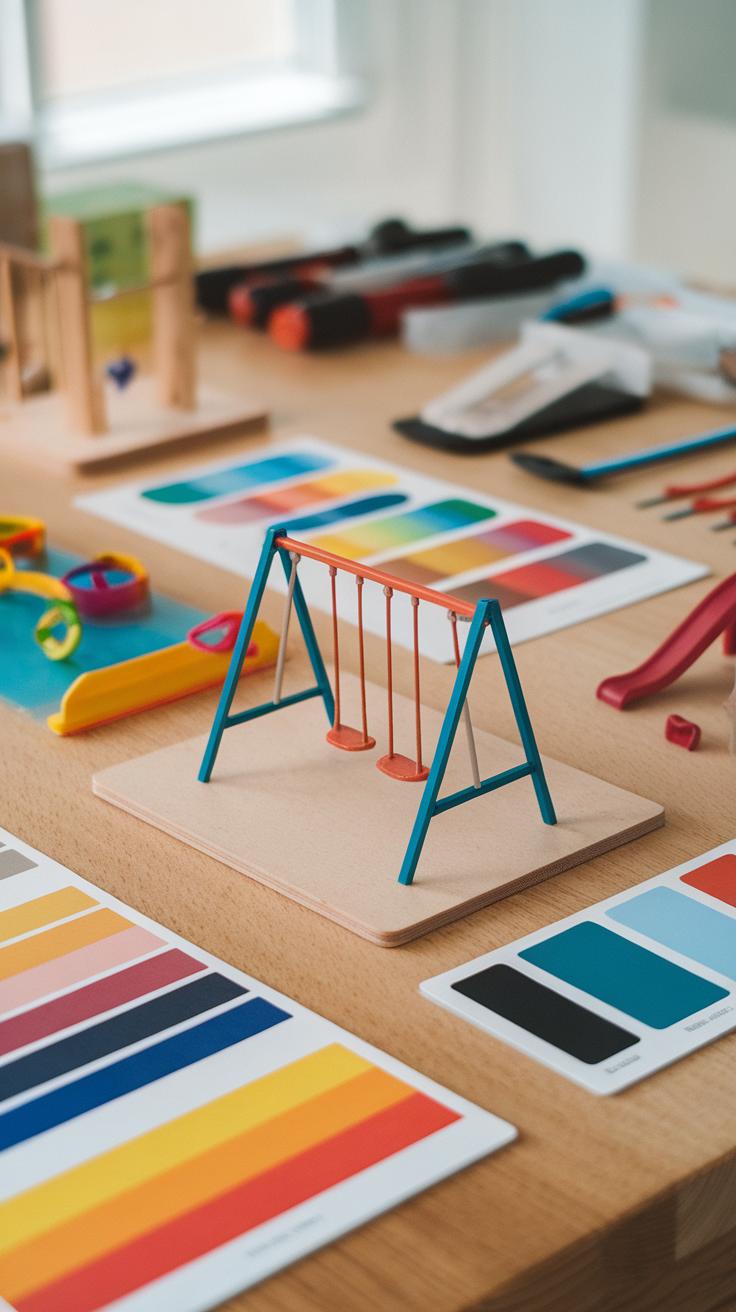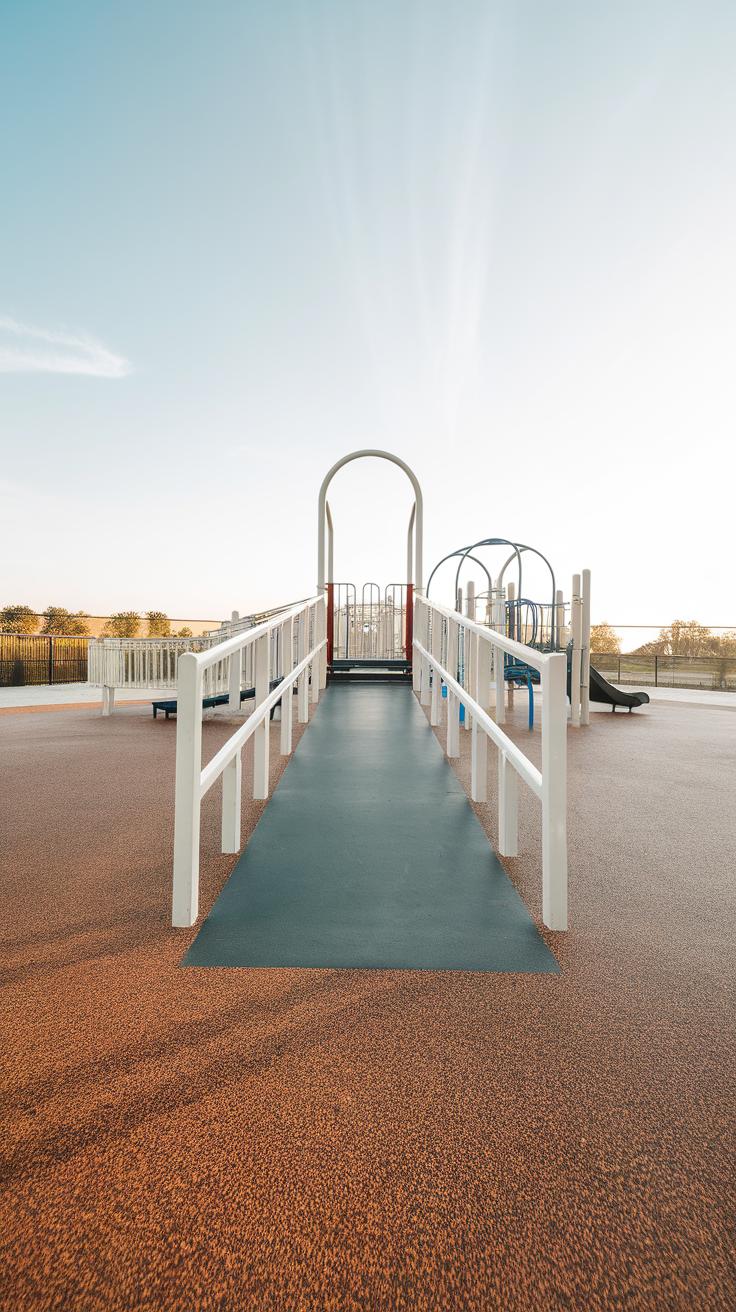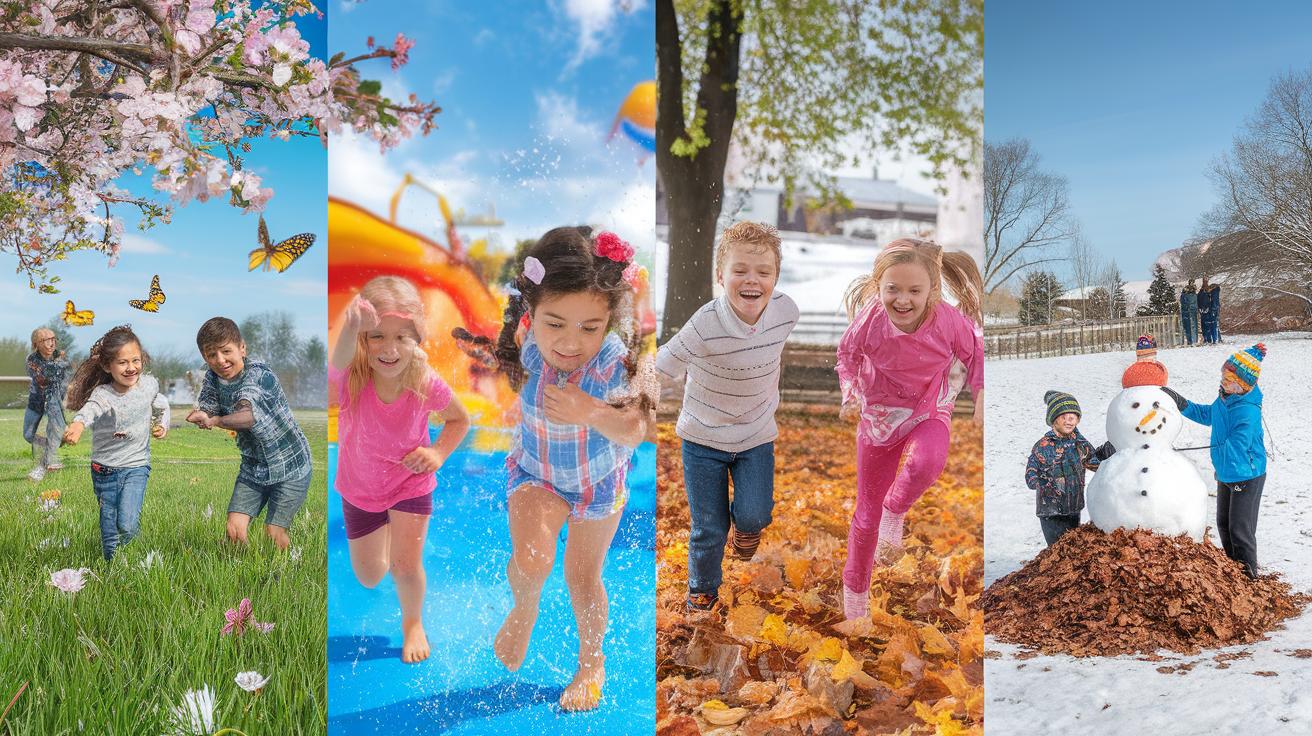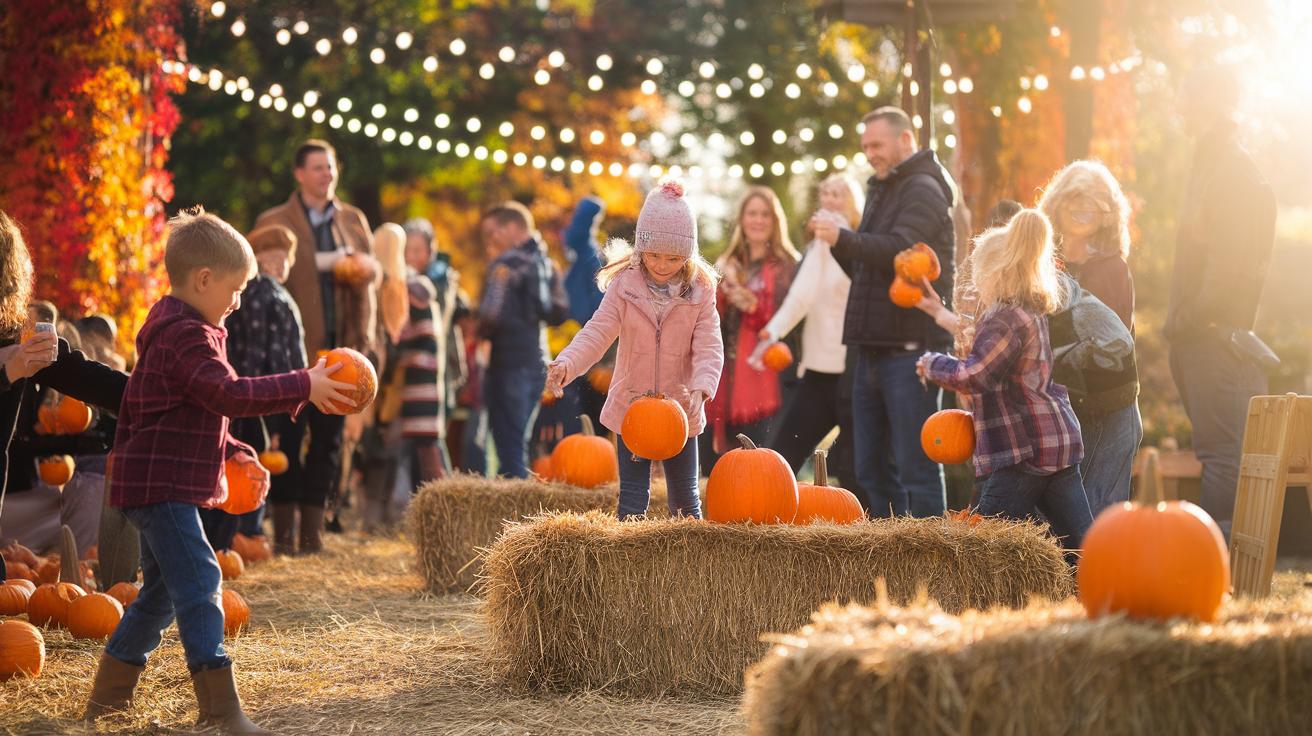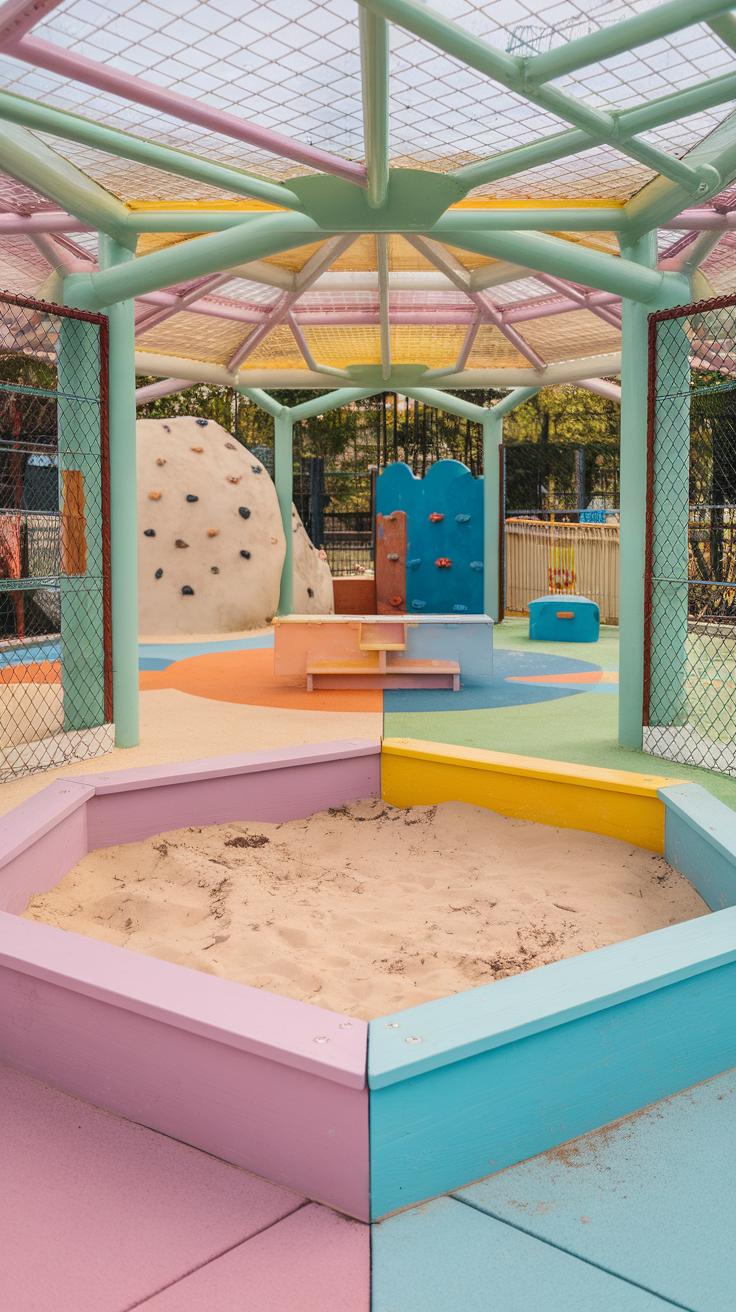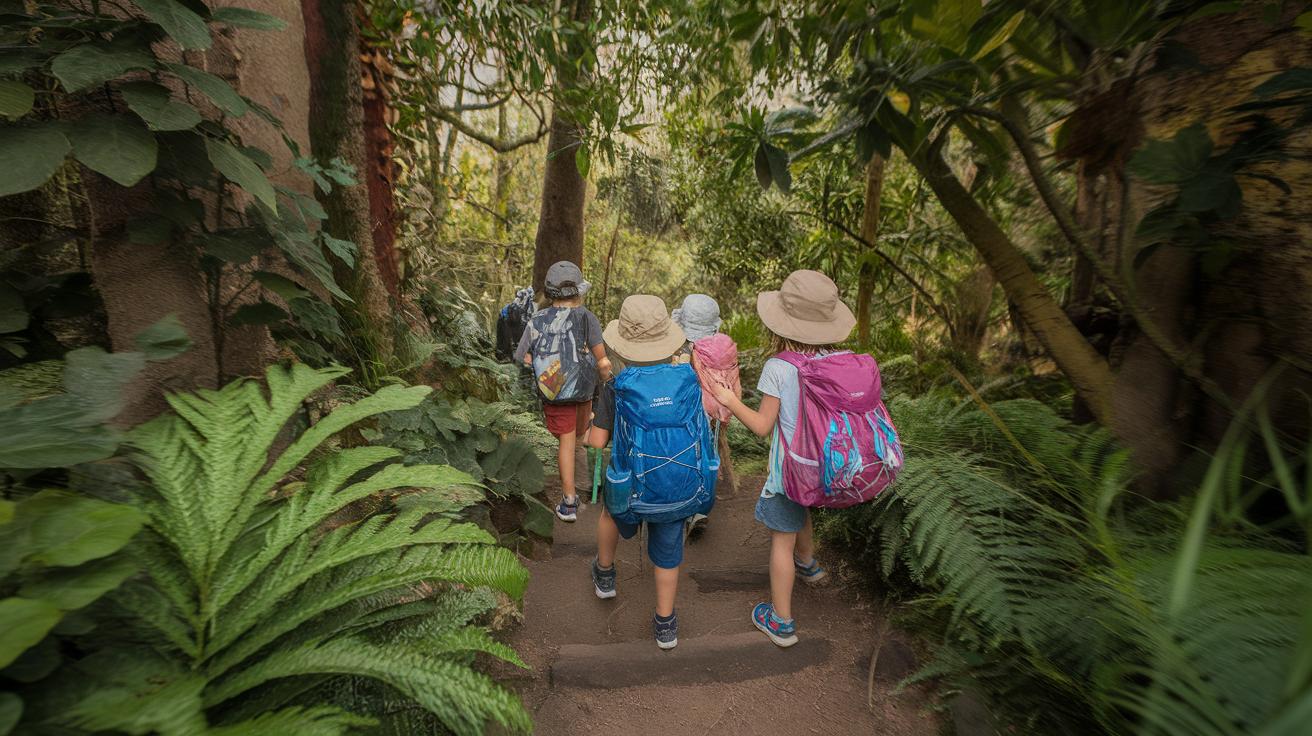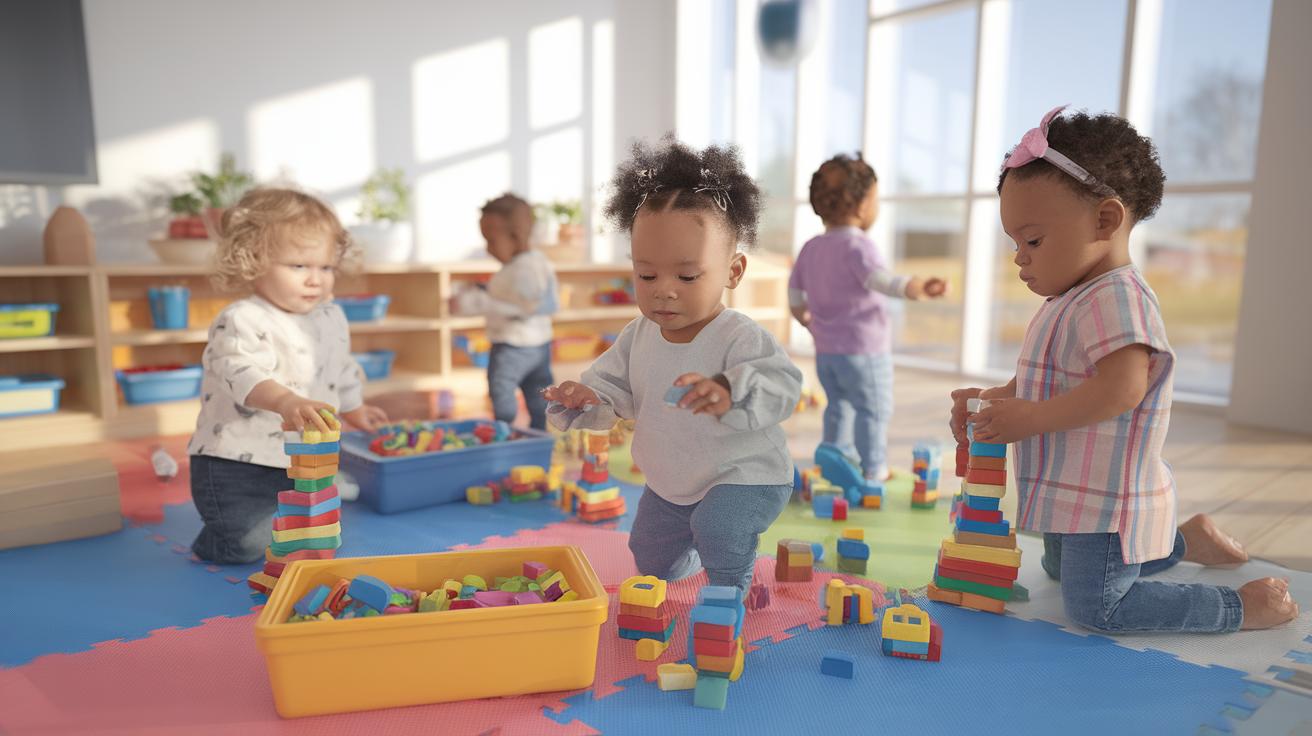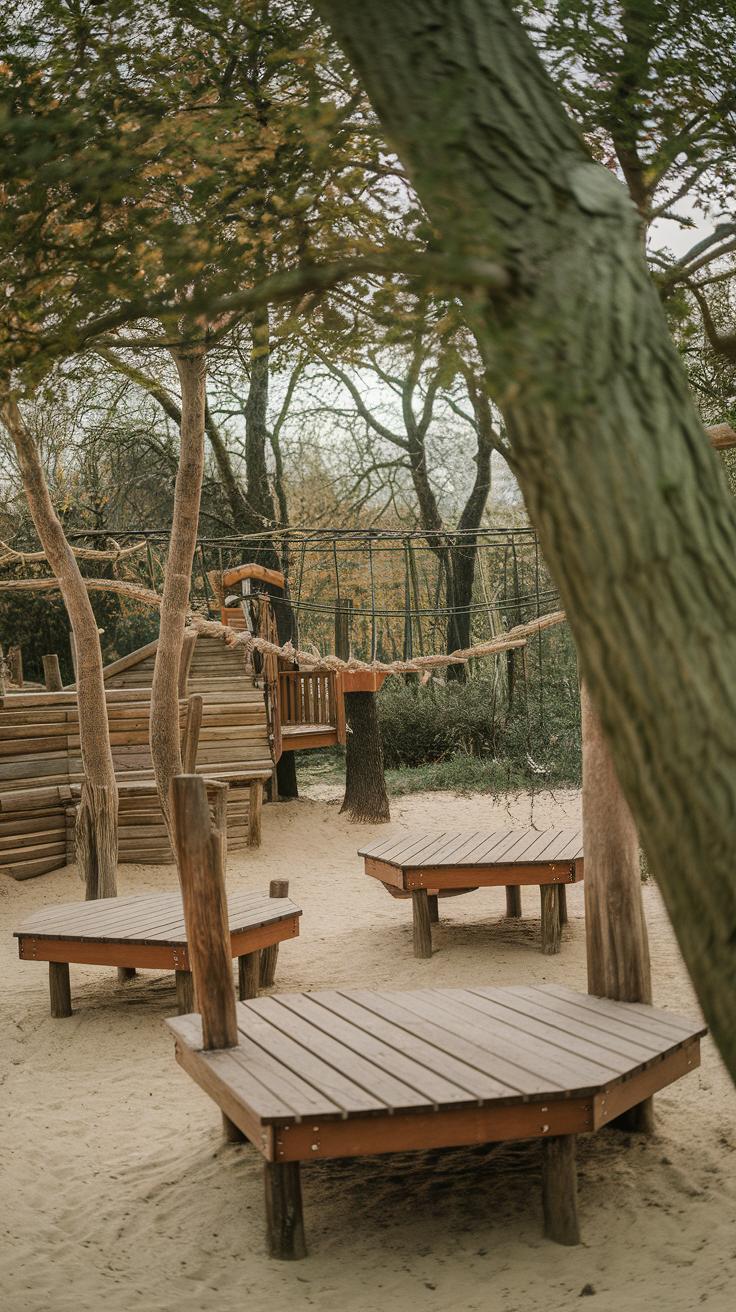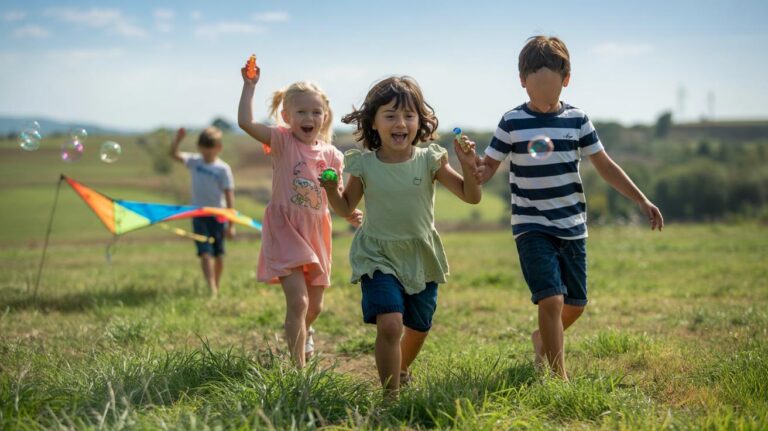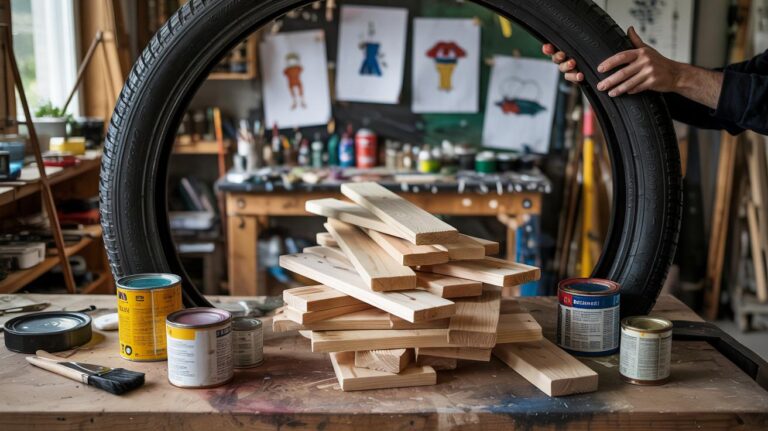Introduction
Outdoor kids play areas offer children a dedicated space for physical activity, social interaction, and imaginative play. Creating a play area that is both fun and safe requires careful planning and design considerations. When children have access to well-designed play spaces, they are more likely to develop motor skills, coordination, and teamwork. This article examines how to design an outdoor kids play area that maximizes fun while ensuring safety and accessibility.
Designing a play area involves choosing the right equipment, layout, and features that attract children and keep them engaged. Elements such as different types of play equipment, nature integration, and safety surfaces need to be considered. How can you balance challenge and safety? This article explores these aspects in detail and offers practical advice for building a play area that children will love and parents will trust.
Understanding The Importance Of Play For Children
Play is more than just fun for children. It serves as a foundation for their growth in many areas. When children play, they use their bodies, minds, and emotions all at once. This helps them build strength and learn about the world around them.
Outdoor play areas offer unique chances for children to be active and interact with others. Physical movement outdoors naturally improves their health and builds coordination. Children also learn how to work with peers during group games. These moments teach important social skills like taking turns and solving problems together.
Playing outside helps children express their feelings and build confidence. It sparks creativity when they invent games or use natural elements like sticks and rocks. These experiences also encourage learning through discovery and trial and error. Would your child’s playtime benefit from a space built just for their growth and joy?
Physical Benefits Of Outdoor Play
Moving around outside helps children develop muscles and stay fit. Running, climbing, jumping, and balancing all improve motor skills. When children use a seesaw or swing, they gain better control over their bodies. Kicking a ball or tossing a frisbee also boosts hand-eye coordination.
Active play encourages children to build habits that support healthy lifestyles. Even short bursts of play increase their heart rate and lung capacity. What types of outdoor equipment or games would inspire your child to be active every day?
Simple play activities like hopscotch, tag, or balancing on a log are great for building strength and balance. Outdoor spaces can be designed to include these features, helping children practice skills while having fun.
Social And Emotional Growth Through Play
Sharing playground equipment or playing group games teaches children how to cooperate and communicate effectively. These skills translate to better relationships inside and outside of playtime. Children learn how to listen, negotiate, and express their ideas clearly.
Emotional benefits of outdoor play include stress relief and increased confidence. When children try new challenges like climbing or taking turns, they build resilience. Overcoming small obstacles helps them develop a positive mindset about facing difficulties.
Playing outside with others provides opportunities for friendship and empathy. When your child plays with peers, they practice reading emotions and acting kindly. How do you see your child growing emotionally through play with friends?
Planning Your Outdoor Kids Play Area
Planning an outdoor play area starts with deciding how to use your space wisely. Think about the children’s ages and what kinds of activities they enjoy. Younger kids need safe areas for crawling and climbing, while older kids look for challenges like climbing walls or obstacle courses. Separate spaces for different age groups prevent accidents and keep play safe and fun.
Safety should guide your design choices. Make sure equipment is sturdy and surfaces can protect kids from falls. Also, consider paths and entrances that allow easy access for children with mobility needs or strollers. Ask yourself where adults will watch easily from a distance without interrupting play.
Don’t plan alone. Include children and parents in your discussions. Ask what the kids want to play on and what adults need for supervision and comfort. Their ideas help shape a space everyone enjoys. Have you asked the children what games they like? Are the caregivers comfortable with the location and safety features? Their feedback creates a place that fits real needs.
Assessing Space And Location
Select a spot with good sun exposure but some shade. Kids need warmth to play comfortably but also protection from sunburn. Check the ground type—soft soil or grass cushions falls better than hard pavement. Avoid places that gather water or get muddy.
Think about how close the area is to where adults stay. Can caregivers see the play zone without walking far? Can you place seating nearby for easy watching? Natural elements like trees or bushes add beauty but should not block views or hide hazards.
How large should the area be? It depends on how many children will play at once and the types of equipment planned. Measure your space carefully and leave room for kids to run and play freely. Does the spot feel open enough to allow safe play, or will it feel cramped?
Involving Children And Caregivers
Children know best what excites them. Ask them to share favorite games or equipment they enjoy. Use drawings or simple questions to gather their ideas. Their creativity sparks unique features and ensures the area invites regular use.
Caregivers offer perspectives on safety and convenience. They can highlight concerns like shade during hot days, seating for supervision, or paths wide enough for strollers. Their input ensures the play area supports both play and care.
Keep the conversation ongoing. Gather feedback after building the space to adjust and improve. When children and adults feel heard, the play area becomes a shared space that everyone values and supports. Have you tried involving users in the design process? What surprises did their input reveal?
Choosing The Right Play Equipment
Age-Appropriate Equipment
Choosing equipment that fits your children’s ages means they can play safely and stay interested. For toddlers, look for small slides, low climbing steps, or soft sensory panels. These support their developing motor skills without overwhelming them. Older kids need challenges like taller climbing frames, rope ladders, or swings that allow more movement and coordination. Mixing equipment by age group avoids accidents and boredom. You could observe how your kids play or ask parents which equipment holds their children’s attention longest. Are your kids reaching for the same piece repeatedly? That’s a clue to what suits their stage best. Keep in mind growth—equipment slightly above their current skill level encourages them to stretch capabilities without risk.
Types Of Play Equipment To Include
Your play area should offer different ways to play. Slides and swings provide active fun and build balance. Climbing structures train strength and planning skills. Adding sensory elements like textured panels or musical boards helps children engage touch and hearing. Consider including equipment for imaginative play, such as playhouses or tunnels. These invite kids to invent games and socialize. Variety keeps the area lively and teaches new skills. What combination allows your children to switch from physical to quiet play easily? Offering choices encourages longer and richer play sessions. When picking materials, choose durable, safe options that suit outdoor use and provide tactile interest.
Designing For Safety And Accessibility
Creating a play area means putting safety first. Choose materials that reduce slips, falls, and injuries. Avoid sharp edges and use soft, impact-absorbing surfaces like rubber mulch or engineered wood fiber. These options cushion falls better than concrete or hard-packed dirt.
Arrange equipment with enough space between each piece to prevent collisions. Consider areas where children might gather to avoid overcrowding. Clear sightlines help adults keep an eye on kids at all times. Think about weather exposure too—shade structures protect from sunburn and heat.
When you design your outdoor area with safety and accessibility in mind, you offer every child a chance to play freely and confidently. How can your layout reduce risks and improve comfort? Look closely at paths, ground materials, and equipment placement to create a welcoming, secure space for all children.
Safety Standards And Materials
Your choices should meet established safety standards for playground equipment. Check for compliance with local and national guidelines like ASTM or CPSC standards. These rules cover equipment height, spacing, and hardware to prevent accidents.
For materials, durable plastics, treated wood, and powder-coated metal work well outdoors. Avoid toxic paints or finishes that can harm children. Frequent inspections and maintenance keep equipment safe over time. Replace worn or broken parts immediately to reduce risk.
Using tested, sturdy materials lets you build a play area that lasts and stays safe. Have you checked if your current equipment meets safety standards? Investing in trusted products helps you avoid injuries and gives parents peace of mind.
Ensuring Accessibility For All Children
An inclusive play area welcomes every child, regardless of ability. Design wide, smooth paths for wheelchair access. Low ramps with handrails connect different levels and play zones. Make sure there’s enough room around equipment for easy navigation.
Add sensory-friendly features like textured surfaces, musical panels, or tactile boards. These engage children with sensory differences and support varied ways to play. Quiet, shaded zones offer calm spaces if kids need a break.
Think about the diverse needs of the children who will use your play area. Could adding equipment for visual, auditory, or physical access change their experience? Creating a space that everyone can enjoy encourages cooperation, independence, and fun for all.
Creating Zones And Themes In The Play Area
Zoning your outdoor play area into clear sections helps children enjoy varied activities without distractions. Each zone can focus on a different type of play, which supports growth in multiple skills. For example, an active zone encourages running, jumping, and climbing. A quiet zone offers a calm space for reading or puzzles. A creative zone invites arts, building, and imaginative play. Organizing these zones side by side makes it easier for kids to choose the kind of play they want and try new activities.
Themes add another layer to this by inspiring imagination and storytelling. Imagine a nature corner filled with logs and leaves where children can pretend to be explorers. Or an adventure zone with a small fort and rope bridges to challenge balance and courage. Each theme creates a setting that goes beyond play equipment—it invites children to build worlds and stories. How can you match themes to your children’s interests and expand their creativity?
Activity Zones For Varied Play
Creating zones based on activity type helps cater to different needs and energy levels. An active play zone might include swings, slides, or a climbing wall to build strength and coordination. Quiet play zones can feature benches with books, sensory tables, or small tents where kids can relax or focus. A creative play zone may have space for drawing, sandboxes, or materials for building projects.
Separating these zones allows children to move between energy bursts and calm moments easily. This also helps caregivers keep an eye on each child’s activity. Which activity zone do your kids use the most? Consider adding new elements where they spend the most time.
Using Themes To Spark Creativity
Themes give children a backdrop for creating stories and roles. A nature theme might include bug houses, bird feeders, and plants to discover. This invites curiosity about living things. An adventure theme could feature tents, ropes, and maps that encourage teamwork and problem-solving. A fantasy theme might use castles, magic wands, or costume areas to let kids invent characters and quests.
The key is to use simple props that children can manipulate or add to over time. Themes that relate to their real interests make the play area feel personal and exciting. What favorite stories or ideas could inspire your theme choices? Themes not only boost play but also help children develop social skills and creativity.
Incorporating Nature Into The Play Area
You can make your outdoor play area more engaging by bringing natural elements into the space. Plants, water, and natural materials offer children new ways to explore their senses. Imagine adding a small garden where kids can dig in the soil or plant flowers. This activity helps them connect to nature and learn about growth and care.
Water features like a shallow stream or splash pad encourage hands-on discovery, cooling off during hot days while sparking curiosity. Natural textures found in wood, stone, and leaves invite children to touch, climb, and balance, building their physical skills and confidence.
How might adding natural elements change the way kids play? By including these features, your play area becomes a place for sensory learning and imaginative adventures. You create a room for children to test, explore, and enjoy the outdoors beyond traditional playground equipment.
Natural Materials And Structures
Using wood, stones, and plants in your design can make the playground feel more connected to the environment. Wood works well for building climbing structures, balance beams, or benches. Its texture and warmth offer a natural feel that plastic can’t match.
Rocks create natural seating, stepping stones, or obstacle courses that challenge balance and strength. You might build a small rock wall or arrange stones for kids to jump across. These features encourage active play and problem-solving.
Plants add color, shade, and sensory experiences. Choose a mix of grasses, flowers, and shrubs that children can gently touch or smell. Creating paths bordered by plants invites kids to wander and discover new areas within the play space. What natural materials could you add that fit your outdoor area’s size and style?
Benefits Of Outdoor Natural Play
Playing in natural settings supports curiosity by encouraging kids to ask questions like “What is this?” or “How does that work?” This type of play involves problem-solving, such as figuring out how to balance on a log or follow a winding path.
Nature also promotes creativity. Children use sticks, leaves, and stones in their games, inventing new roles and stories. This open-ended play boosts imagination better than highly structured toys or equipment.
Spending time outdoors fosters a connection to the environment. Kids learn to respect plants and animals, which can lead to lifelong care for nature. What fun, natural activities could you create to strengthen your child’s bond with the outdoors?
Maintenance And Upkeep Of Your Play Area
Keeping your outdoor kids play area in good shape requires regular attention. Consistent inspections, cleaning, and repairs make the space safe and fun for children. You might wonder how often you should check the equipment or what parts need the most care. Small issues like loose bolts or cracks in plastic pieces can turn into big safety hazards. Fixing these problems quickly prevents accidents.
Cleaning removes dirt, leaves, and debris that might make surfaces slippery or hide dangers. You should also clear away any broken glass or sharp objects found during inspections. Repairing worn-out parts extends the life of play structures and keeps playtime enjoyable for children. Is it easy for you to set a maintenance routine? Try adding reminders on your calendar to stay consistent.
Remember, regular upkeep is the key to a safe play area where kids can explore without risks. Well-maintained equipment encourages parents to feel confident while their children play freely and happily.
Routine Safety Checks
Inspect your play equipment every week. Look closely for loose bolts, sharp edges, or cracks. Check swings, slides, and climbing frames for stability. Are any parts wobbling or rusting? Tighten hardware and replace worn pieces immediately.
Ensure all surfaces remain smooth and free of splinters or rough spots. Look under coverings and in corners for hidden hazards like insects or broken glass. Test safety mats and soft ground materials to confirm they still cushion falls well. Record your inspections to track maintenance and notice recurring issues.
Small repairs prevent bigger problems. You can keep children’s play risk-free if you act fast on any damage discovered. How often do you spot minor defects before they grow worse? Regular checks make your play area a trusted place for kids every day.
Seasonal Maintenance Tips
Prepare your play area for changes in weather each season. Before winter, apply a water sealant to wooden surfaces to protect against moisture and rot. Remove any fallen leaves or debris that trap dampness. In spring, check for new cracks caused by cold weather and replace damaged parts.
During hot summer months, provide shade to prevent equipment from overheating and becoming unsafe. Trim overgrown plants around the play area to keep space clear and visible. In fall, rake leaves regularly and ensure drainage systems work well to avoid puddles or mud buildup.
Seasonal landscaping also helps maintain a safe environment. Consider planting shrubs that reduce wind or adding mulch to soften hard grounds. Adjust your maintenance plan as weather shifts to extend the life of your play space and keep children comfortable year-round.
Encouraging Social Interaction And Group Play
Designing For Group Engagement
Arrange play equipment to allow several children to use it at once. Swings with multiple seats, see-saws, and large climbing structures invite shared use. Design open spaces for group games and easy movement.
Place benches or low walls near play areas where kids can rest and talk. Circles or squares instead of straight lines make it easier for children to face each other and communicate during play.
Add features like sandboxes or water tables that encourage teamwork. Consider equipment that lets kids build or create together. How can you arrange your play area to encourage children to interact rather than play alone?
Games And Activities For Social Play
Introduce games like tag, relay races, or treasure hunts that require cooperation. Team activities help children develop communication and problem-solving skills.
Use equipment like tunnels, balance beams, or obstacle courses where children must take turns or work in pairs to complete challenges. Group sandcastle building or planting a garden offers shared goals and fun.
Ask yourself how you can design activities that require children to rely on each other. What games could your space support that encourage children to cooperate and make friends?
Safety Tips For Supervising Outdoor Play
Watching kids play outdoors means staying alert. You should always scan the play area for potential hazards, like broken equipment or uneven ground. Spotting these early helps prevent injuries before they happen.
Keep an eye on how children interact with their surroundings. Some kids may try risky moves or explore new challenges. Ask yourself: what risks are present, and how can you reduce them without stopping play?
Helping kids gain independence is important. Let children try activities in safe ways, allowing them to test limits and build confidence. At the same time, have a plan to step in immediately if something feels unsafe.
Balancing care with freedom creates a space where children can grow and have fun. Think about how your supervision style affects their experience. Are you watching closely enough, but not so much that it stops them from exploring?
Active Supervision Strategies
You can prevent many accidents by staying close and watching continuously. Move around the play area instead of standing in one spot. This helps you catch problems from different angles.
Use your eyes and ears. Listen for unusual sounds—like a child calling for help—and look for body language that shows discomfort or hesitation.
Plan where to position yourself. Stay near higher-risk spots such as slides or climbing frames. Being close lets you react quickly if kids get stuck or hurt.
Encourage kids to tell you if they feel unsafe or need help. Talk with them about rules and why they matter. This builds trust and helps you spot risks sooner.
Balancing Safety And Freedom
Children learn best when they can explore and make choices. Create rules that keep danger low but don’t block creativity.
Ask yourself which activities need limits and which can be more flexible. For example, allow running freely but set boundaries around water features.
Teach kids how to recognize risks themselves. When they understand what makes something unsafe, they can play more safely without constant supervision.
Giving children some control helps them develop problem-solving skills. How can you adjust the environment so they bring their own ideas on staying safe?
Conclusions
Creating an outdoor kids play area that balances fun and safety is achievable with thoughtful planning and the right design choices. Providing a variety of equipment and activities encourages children to develop diverse skills. Incorporating safety features and accessible design assures that the play area remains welcoming and secure for all children. Regular maintenance also keeps the play area functioning and safe for long-term enjoyment.
Your outdoor kids play area can become a vibrant place where children grow physically, socially, and emotionally. By involving your children in some design aspects, you can tailor the space to their interests and needs. A well-designed play area provides endless opportunities for exploration and joy, fostering healthy habits and happy memories. Are you ready to plan a play space that maximizes fun and supports your child’s development?


